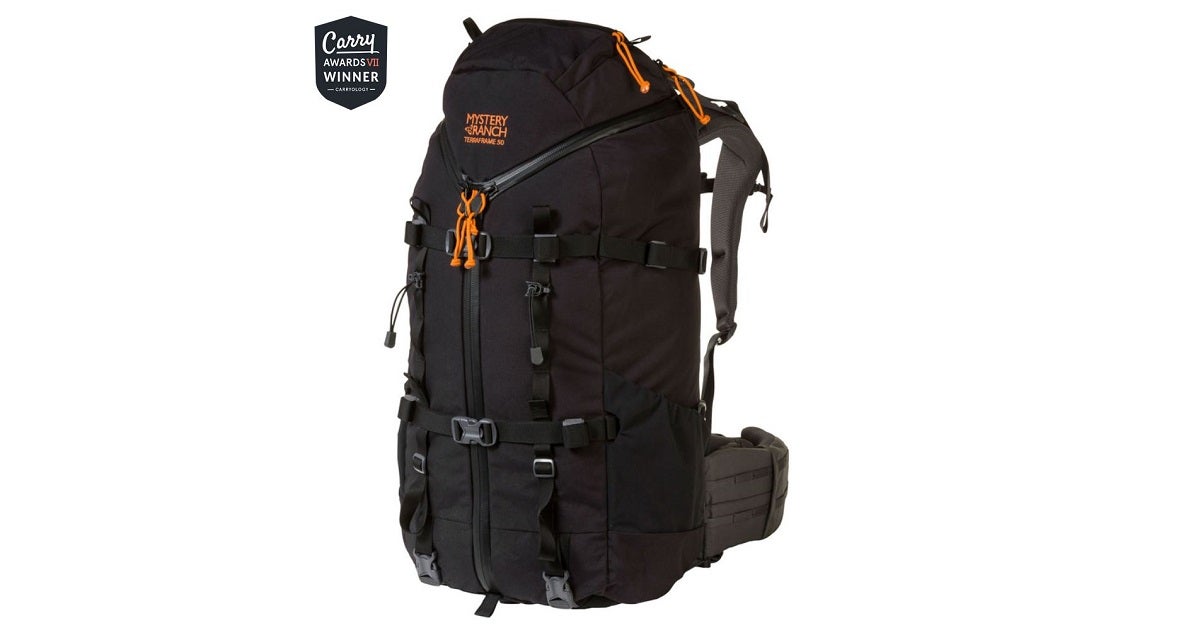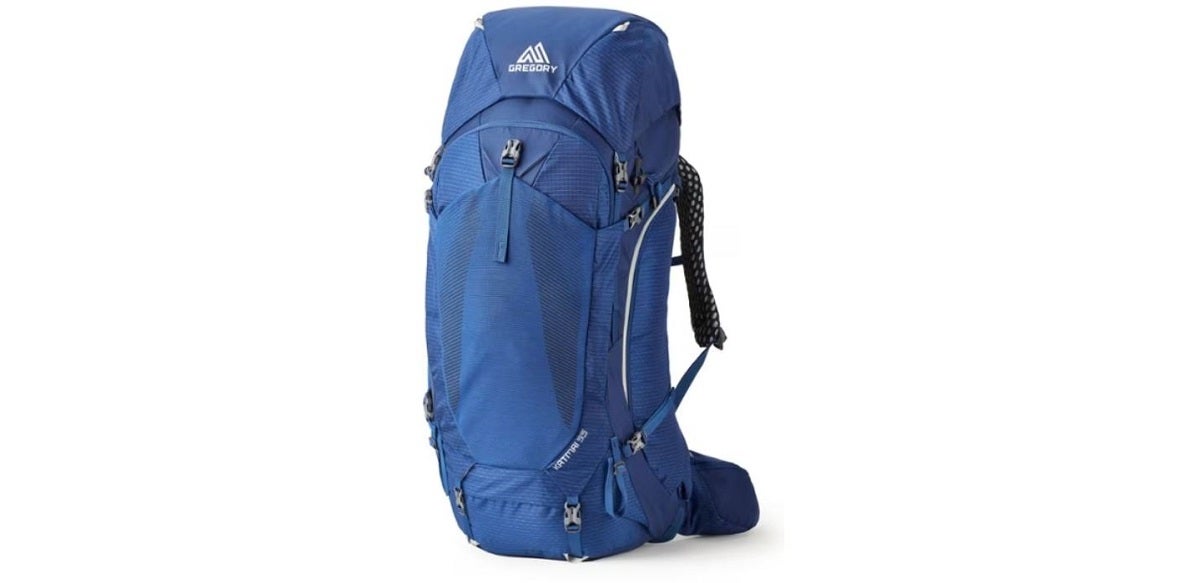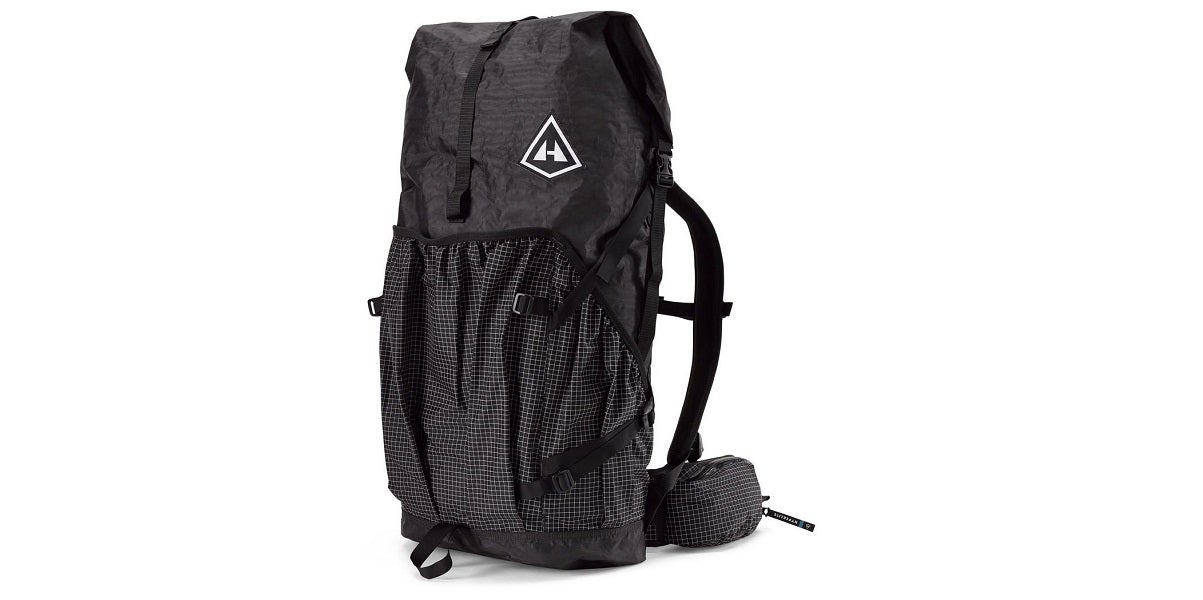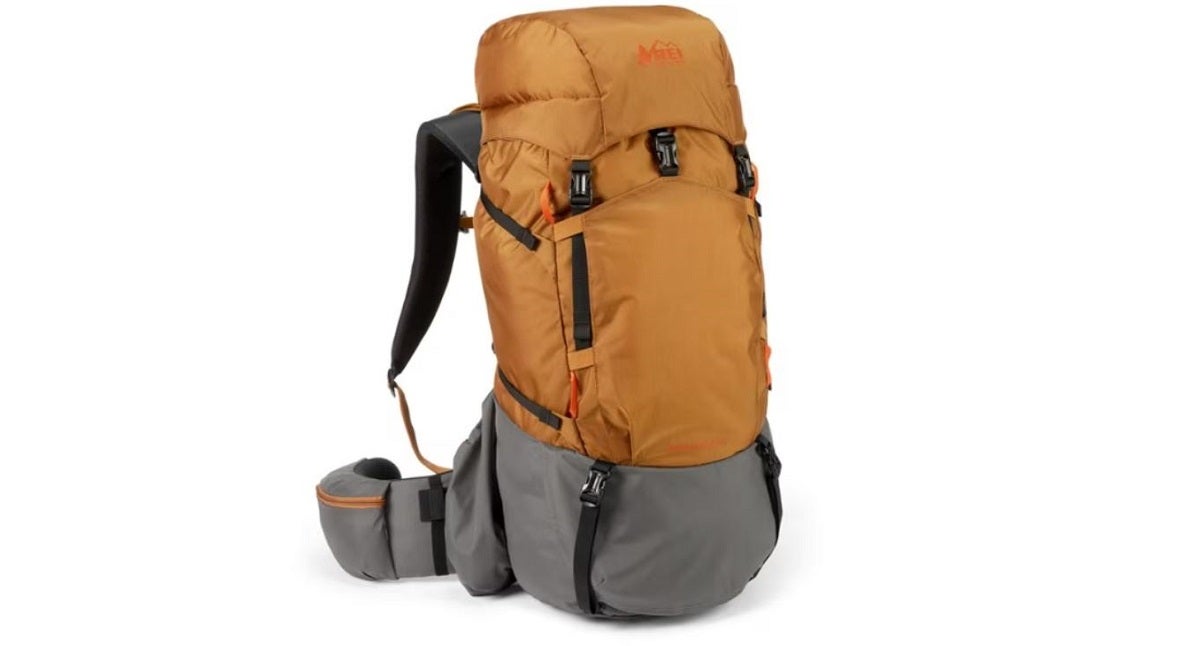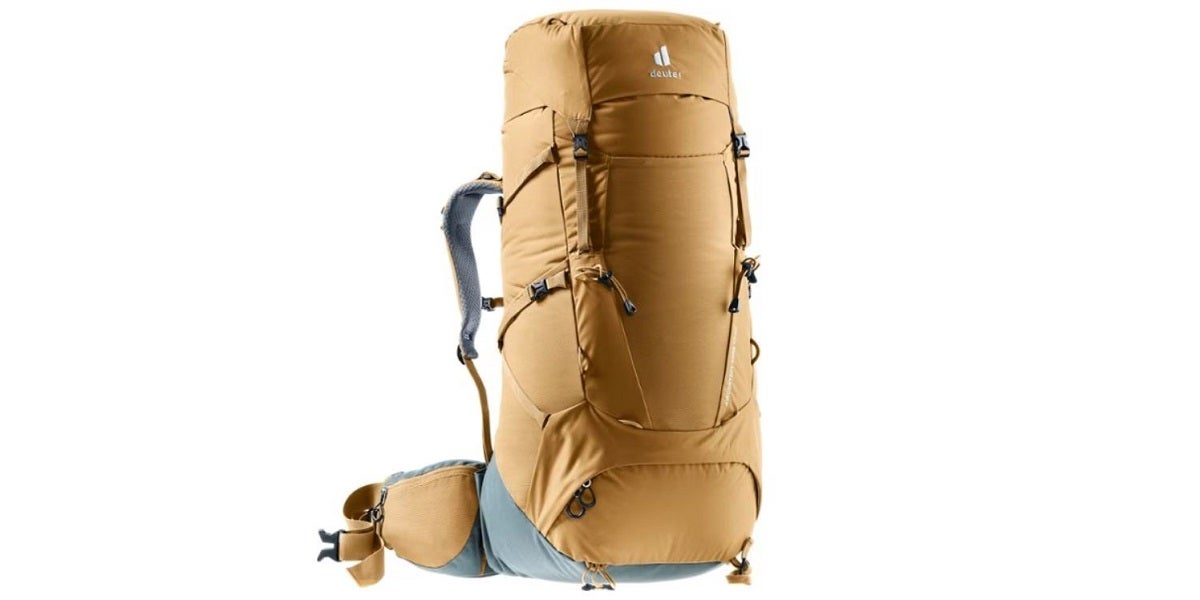AllOutdoor Review – The Best Overnight Backpacks for Camping in 2023
Travis Olander 08.25.23

This writer is dumb: I hike and camp with a 40-year-old ALICE Pack, when I should invest in a quality, lightweight frame and bag that won’t compress my spine so badly. Milsurp hiking gear is indestructible, sure. But that stuff is also heavy, cumbersome, and uncomfortable – it is made for warfighting, after all. I think it’s time to ditch the USGI gear and go for something more appropriate. Let’s look at the best overnight backpacks and light camping backpacks.
Camping Coverage on AllOutdoor
- AO Review: Estwing Sportsman Axe – Only Camping Chopper You Need
- The Path Less Traveled #070: Stealth Camping, Ever a Good Idea?
- The Path Less Traveled #068: Trailspoon Thanksgiving Camping Meal Review
- Shelter by Cinch – New Take on Tarp Camping & Getting Outdoors
What’s in Ideal Overnight Backpacks?
Hiking packs come in all shapes and sizes. Some are made for weeks-long treks. Others are made for alpine climbing. And others still are best suited for the typical 24-hour stint with an overnight campfire. Consider these components before buying any pack.
Capacity/Size
We’ll keep it simple: You shouldn’t need to exceed 65 liters in capacity if you’re looking for a one- or two-night camping backpack. A pack that provides 45 to 60 liters of volume often works best: This capacity range provides enough space for the essentials – food, shelter, and water – without straining your frame.
Weight
Weight and volume are complementary. One affects the other, so it’s important to balance your capacity with your pack’s dry, unpacked weight. Some ultra-light, frameless packs weigh as little as 2 pounds or less, while higher-capacity framed setups can weight up to 7 pounds empty.
Comfort & Support
The more comfortable your pack is, the more enjoyable your adventure will be – so long as you don’t sacrifice durability. A comfortable backpack keeps the center of gravity close to your spine and below the shoulders. An adequate cummerbund is a critical component, and you should never gloss over how padded (or bare) a pack’s shoulder straps are, lest you regret it later. A framed pack tends to distribute weight more effectively, which translates into better comfort and support. But if you’re able to invest in lightweight gear and pare down your packing list, you might find an ultralight, frame-less pack is more comfortable even still.
Now that we’ve cleared up what’s important in picking the perfect backpack, let’s look at some top picks.
Mystery Ranch Terraframe 50 (Best Heavy-Duty Framed Pack)
Mystery Ranch makes some badass bags, many of which are used by military operators. Weighing in at just 5 pounds, the Terraframe looks like a light-duty hiking pack. But its internal “Guide Light MT” carbon fiber frame and heavy-duty Cordura canvas – festooned aplenty with compression straps – allows the Terraframe to easily carry up to 150 pounds. For all its capacity, the Terraframe is still a relatively compact, easy-to-carry, comfortable pack. It sports a telescoping yoke for a perfectly custom fit, and its “OVERLOAD” load sling provides plenty of extra carrying capacity outside the bag itself: Just loosen up the compression straps, and shove your tent or sleeping bag in between the pack and frame.
This sandwich-esque carry method eliminates the need to lash your extra bags atop or underneath the pack. It also keeps the center of gravity close to your pack, allowing the frame and cummerbund to carry most of the weight without making you feel like you’ll tip over. The Terraframe’s unique “Y-incision” zipper setup makes stuffing the bag full of gear super simple. The top and sides open up like a clam shell, providing easy access to the main compartment. YKK zippers ensure nothing pops when you’re stretching things a bit, and the compression traps help take all the load off the zippers themselves. The Terraframe’s performance doesn’t come cheap, though – expect to dish out $400 for this heavy-duty, lightweight hiking pack.
Gregory Katmai 55 Pack (Best Hot-Weather Pack)
Even in mild weather, a loaded pack can quickly soak your back in sweat – unless you’ve got the Katmai from Gregory. This 55-liter hot-weather backpack boasts some of the best ventilation. A fully suspended “FreeFloat 3D” mesh liner separates your back from the pack, providing top-to-bottom airflow. That same mesh wraps around the padded straps and cummerbund, reducing hot spots when you’re on the move. All the fabric’s been treated with a “Polygiene Stay Fresh” antimicrobial treatment to kill bacteria and odor, too. The Katmai features an alloy and fiberglass frame, while the bag itself is made from a mix of 210- and 420-denier nylon. Gregory equipped the Katmai with an internal hydration sleeve and hanger that works with their proprietary water bladder, the 3D “Hydro Trek” reservoir.
Plenty of other accoutrements betray the Katmai’s simple appearance: A floating top pocket and 7-compartment organization provide all the room you need for a night or two on the trail, with fixtures for securing your sunglasses, trek poles, and a separate “Nano 14” daypack for stowing your sleeping bag or tent. With a dry weight of just under 5 pounds, the Katmai is pretty lightweight, too. Available in S/M or M/L for just under $300.
Hyperlite Southwest 55 (Best Ultralight Pack)
But no bag on this list is as much a featherweight as the Southwest 55. Weighing in at just 2.2 pounds, this offering from Hyperlite lives up to the name. The Southwest ditches some features you may find wanting. It has just a few, small compression straps, and there are no fancy tie-downs or exposed framework for lashing on extra gear. But if you’re the type of trail goer that spends too much money on carbon fiber and titanium gear, the type that demands as little dry weight as possible, there are no better options.
You may ask whether such a svelte bag can handle any load at all – or if it’ll just fray and tear after your first outing – but Hyperlite invested in some pretty crazy composite fabric to construct the Southwest. It’s called DCF, or Dyneema Cuben Fiber. Dyneema says its fabric is “15x stronger than steel.” Similar to Kevlar, DCF is highly resistant to abrasion with incredible tensile strength. That means the Southwest 55 can comfortably carry up to 40 pounds in its 55-liter trunk. Important load-bearings were, thankfully, not part of the weight compromise: The Southwest still affords excellent comfort, with padded straps and an adequate cummerbund. Ballistic-grade, ultralight performance doesn’t come cheap, though. If you want the lightest backpack on our list, it’ll set you back about $380.
REI Co-op Trailmade 60 (Best budget Pack)
Maybe you’re like most hikers, though: You don’t need an aerospace backpack that defies gravity while stopping bullets. If you’re happy with a budget backpack, look no further: REI’s Co-Op Trailmade 60 provides all the features, comfort, and capacity you need for a more manageable price of about $150. The Co-Op Trailmade is still surprisingly lightweight – just 3 pounds, 11 ounces dry – but it sacrifices no features you’d normally find on more expensive packs: Top and bottom access, internal frame, separate sleeping bag storage, lots of organization, compression straps, fully padded back and contoured hip belt, and an adjustable torso leave nothing wanting.
Some users complain about the top compartment cover: It’s not removable, and its “helmet”-like fit mean that extra kit – like a tent bag, or trek poles – can’t be lashed atop. We think this is a bit of a nitpick for a bag that keeps costs down. This writer personally owned the Trailmade 60, and I had no trouble lashing gear to the sides and bottom using the included compression straps. It’s a comfortable, affordable bag that doesn’t tip the scales or break your budget.
Deuter Aircontact Core 60 (Most Comfortable Pack)
But no other bag is as comfortable as the Aircontact Core 50 from Deuter. I had the pleasure of donning this pack at my local REI and, as a stubborn hiker who perseveres through three disc replacements, I was blown away at how well the Aircontact fits and distributes weight. The cummerbund and contoured lumbar support are supremely comfortable, while the shoulder straps feature secondary tie-downs that perfectly balance the top of the bag to ensure a consistent center of gravity with perfect vertical alignment along the torso.
The Aircontact’s dimensions are made for ergonomics, with weight and capacity perfectly divided vertically and laterally. The aluminum frame and lightwest polyamide fabric help keep total weight at 4 pounds, 9 ounces. While this seems like it’s on the heavier side of the 50- to 60-liter bag category, the Aircontact manages its dry weight so well that it feels much lighter than it really is. This is all accomplished by a trapezoidal lumbar frame paired with a Y-shaped torso frame. Deuter’s “VariSlide” adjuster provides tiny adjustments to dial in the back length for a perfect fit, too.
Beyond its phenomenal frame design and carry comfort, the Aircontact is a dream to pack and organize. There’s plenty of top and bottom access, with generous compression straps top to bottom. An expandable collar in the main compartment adds 10 extra liters of storage when you need it. The Aircontact is priced well, too: Grab one for around $230.
